Director of Fire of Love
Sara Dosa
By Alissa Wilkinson - Jul 15, 2022
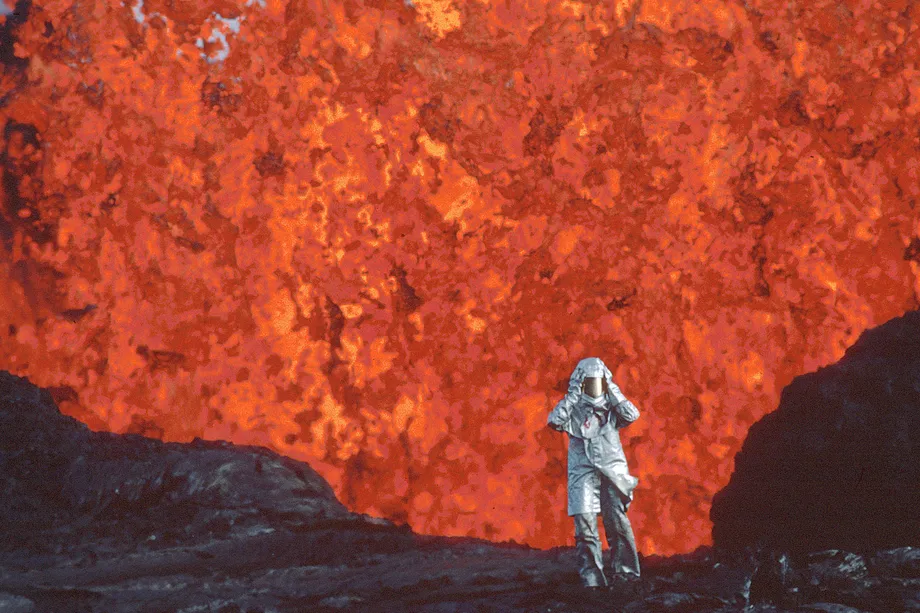
Pic. 1 Fire of Love features gorgeous, explosive imagery. National Geographic
Prelude
Few people get to peer directly into the heart of an active volcano, feeling the heat of the lava on their face, experiencing the heart-pumping excitement of staring into what feels like the origins of the earth. But throughout the 1970s and ’80s, married volcanologists Katia and Maurice Krafft did just that. And they didn’t keep it to themselves; they documented what they saw on video in exquisite detail, generating far more intimate footage than almost anyone had seen.
Yet they didn’t just discover a love for volcanoes there; they discovered a love for humanity. And that’s the subject of Fire of Love, Sara Dosa’s new documentary about the Kraffts that draws from hundreds of hours of their footage as well as news and educational programs on which they appeared. The story that Dosa and her team found in the footage was about a lot more than just science.
The pair perished in a volcanic explosion in 1991, a fact announced by idiosyncratic filmmaker and artist Miranda July at the beginning of the film. Yet despite the oncoming tragedy, Fire of Love retains a sense of magic and whimsy, a feeling that we’re discovering the world along with the Kraffts and coming to understand what drove them toward volcanoes. I couldn’t wait to talk to Dosa about it.
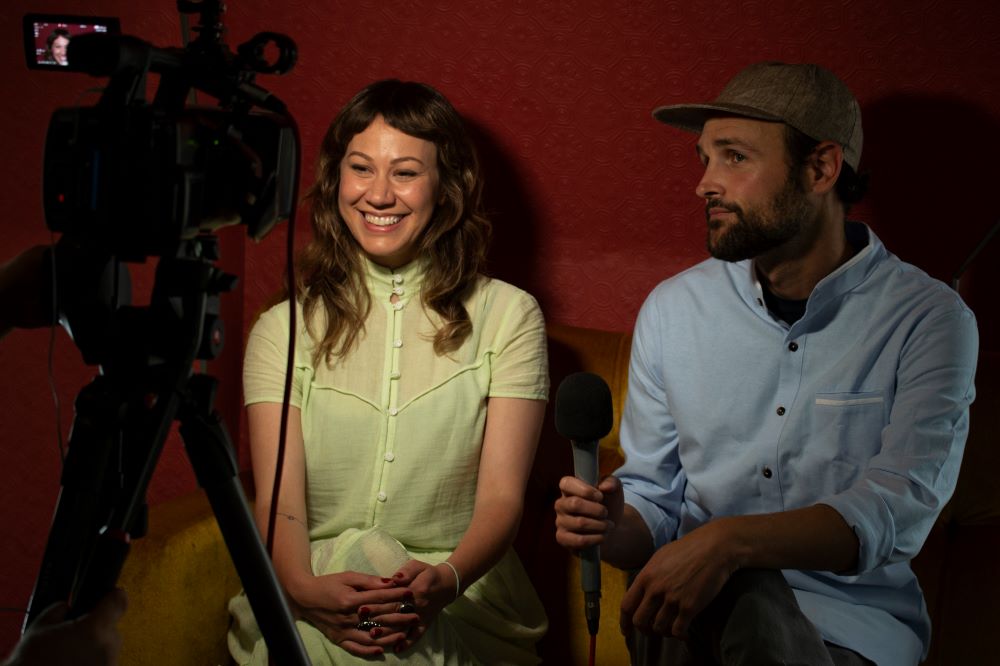
Pic. 2 Director Sara Dosa and producer Shane Boris talk about “Fire of Love” at the 2022 Sundance Film Festival: London.
Interview
When did you realize that this was a love story — maybe a love triangle — between Katia, Maurice, and the volcanoes?
At the very beginning, we were really excited by that idea of a love triangle, but once we actually got into the thick of it, it became challenging. We knew we really needed to establish Katia and her complexity, Maurice and his complexity, volcanoes and their complexity. That required making the science intelligible. How much science do we incorporate? How much character detail do we incorporate? How much narration versus how much animation? It’s very much a collage film, so we were really trying to find the right balance between all the elements so it wasn’t too much of one thing. We started to find out that the more science we put in, the more it kind of congested our narrative channels, so to speak. So we’d have to really pare back and take away.
This movie was made from what seems like a big pile of really interesting footage. How much footage was it? And how do you face that much material and find a story inside of it?
We really wanted the film to be a love story guided by them first and foremost. That kind of focus helped to narrow down how we would approach the material.
There was about 250 hours in total! About 180 to 200 hours of Maurice’s 16 mm footage, which was scanned and beautifully digitized for us. Then there was about 50 hours of television broadcasts — them on variety shows, TV magazines, adventure-type shows, things like that.
At the same time, even though that provided somewhat of a narrative structure, once we actually immersed ourselves in the footage, so many questions broke apart the narrative. ... We actually had written an outline, at first, in a pretty detailed treatment. Then the footage challenged that in a way that was ultimately very satisfying, but at first kind of baffling. We were also really guided by some of the hallmarks of French New Wave.
The French New Wave!
That aesthetic showed up in their own work a lot. For example, in Maurice’s cinematography, there were these really playful snap zooms. A lot of their books were in first person, and it reminded us of the narration in Truffaut movies. It had that kind of playful bombasticity, if that’s the word?
Led by them, we wanted to also embrace some of that style; so much of French New Wave films were guided by an associative approach to editing. So that was something that my editors Erin [Casper] and Jocelyn [Chaput] really embraced too. Also, existentialism and existential angst is the heart of angst-y French intellectuals of the late ’60s and ’70s. So those all helped how we approached the material.
The most important thing for us was letting the footage speak for itself. We wanted Katia and Maurice to be heard as much as we could, but of course that material was so limited. So then it was like, how do we punctuate [the story] with narration? How do we suture with animation here and there, while still letting them author their own stories, so to speak?
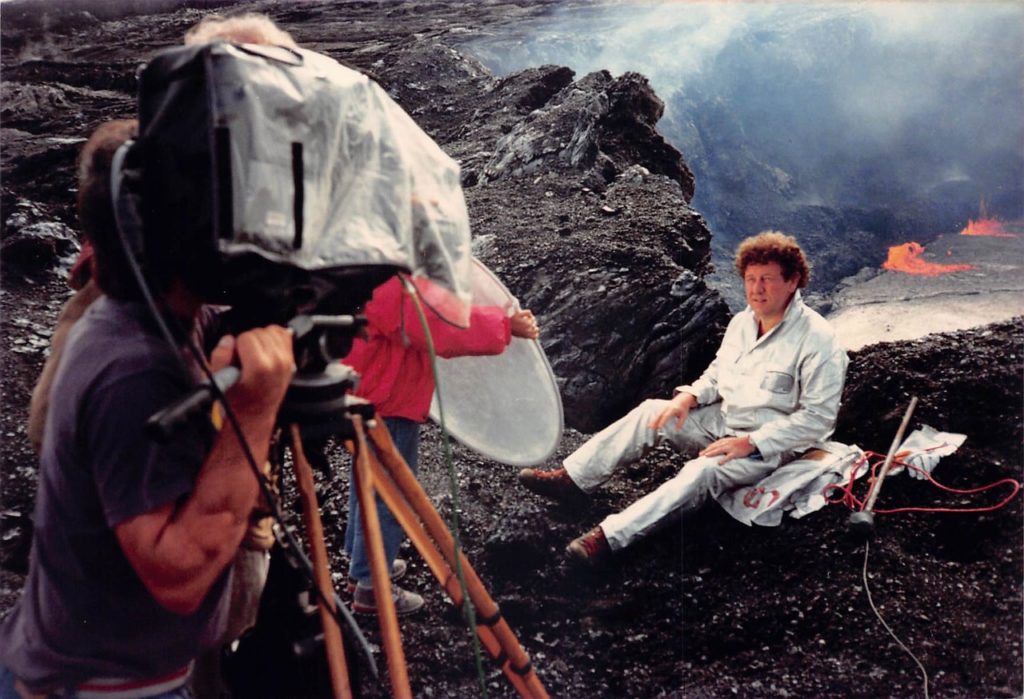
Pic. 2 Director Sara Dosa and producer Shane Boris talk about “Fire of Love” at the 2022 Sundance Film Festival: London.
“
THE MOST IMPORTANT THING WAS LETTING THE FOOTAGE SPEAK FOR ITSELF
”
The narration is one of the film’s most interesting aspects — not just because of the narrator, who of course is Miranda July, but also because it’s almost impressionistic. It’s very poetic. How did the narration play off of the images?
We wanted to have our narration prompt, rather than declare, and ask questions rather than claim to possess any kind of totalizing knowledge. We wanted that to be in line with Katia and Maurice’s own curiosity, the fact that they were constantly searching. They loved volcanoes so much. They were so driven toward the unknown, all the while knowing that they could never fully understand, which is the mystery of volcanoes.
We hoped that the voice of our narrator could possess a similar kind of inquisitiveness and also speak to the limitations of the archive. We wrote a whole backstory for our narrator, but we never wanted the audience to know the backstory.
We wrote the backstory to ask ourselves, “Would our narrator say this?” The narrator was involved in almost a geological process herself: taking the clues of their lives, trying to excavate all the materiality from Katia and Maurice’s grand adventures, trying to make sense of them, all the while knowing that there are gaps [in their story] in the same way scientists might say, “Here’s what we know, and here’s what we don’t know, but here’s conjecture, here’s hypothesis.” We wanted to be upfront about what we didn’t know. A declarative, perhaps more conventional documentary voice or nature film voice would’ve been a lot more fact-based, rather than question-based.
We always wanted our narrator to have a tone that we call “deadpan curiosity,” and there’s no one who does that better, in our minds, than Miranda July. In so much of her work, Miranda is such a keen observer of humanity. She’s one of those artists who’s able to go from the intimate to the majestic universal in an instant.
These were all things we were really thinking about in terms of the writing itself, trying to keep it as sparse as possible, even though that was hard, because there’s a lot that we were trying to impart and there were such limitations that we needed to kind of fill in some of those gaps. But we wanted to make space for Katia and Maurice to come through.
One thing that definitely comes through is Katia and Maurice’s feeling that their relationship to volcanoes helps them love humans more, which is kind of unexpected.
We were very intrigued and inspired by this idea that we came to early on in the research process, of Katia and Reece feeling disillusioned by humanity. Katia was born during World War II and Maurice in 1946, right after the war. In childhood, they were both very much affected by the ravages of war, living on the French-German border in an area of France that was previously occupied. Then, coming of age during the Vietnam War, and seeing these grotesque images on television and really grappling with what to them felt like such a perverse treatment of power. They thought of humanity as possessing the power to create, yet instead choosing to destroy. Whereas, in their youth, they understood volcanoes as this incredible force of creation that literally made the world.
Especially in their youth, there’s an enchantment that pushed them away from what felt like, in their own words, “An absurd, vain, abusive power from humans,” and pushed them toward what felt more like a more authentic expression of power in the natural worlds, through volcanoes.
It was really beautiful and surprising for us as we learned more about their story to see how that deepened and changed through their life. They really evolved in learning to love humans through their work with volcanoes. They became dear friends with people who lived in relationship with volcanoes, whether they were other volcanologists or people who had lived there for generations. They were so in love with this force that the people who also knew how to have relationships with volcanoes, so to speak, became their people.
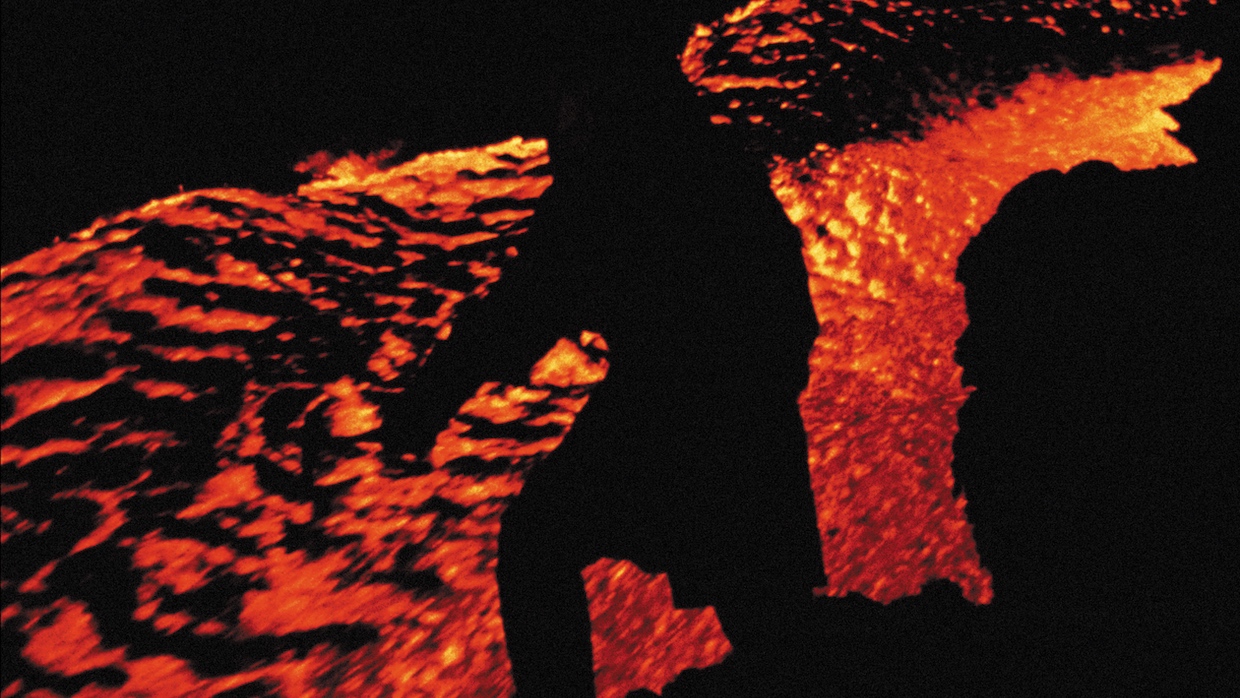
Pic. 4 Katia Krafft in Fire of Love
That allowed them to adjust their mentality, in a way. They still had a hard time going home to France, but especially when they witnessed such destruction … They realized they could deploy this very special skill set that they possessed to communicate — to almost bridge the gap between humans and volcanoes.
I think of them almost like volcano whisperers — “Hey, humans, here’s how you can understand this force, and save yourselves.” Maurice has a quixotic dream, as he says: “It’s my dream that volcanoes no longer kill.” That’s impossible, but I love that that really was his dream. Through their work, they really did try to do that, to get volcanoes to be that creative force that they so fell in love with in their youth.
I think for most people, volcanoes really are destructive. I’ve been near volcanoes — not live ones — but whenever you’re near them, you start thinking, “What if?” We learn about the Mount St. Helens eruption in grade school. We visit Pompeii, or whatever, and the destruction is so clear. Did making the movie change your own relationship to volcanoes?
Oh, it really did, actually. When I was a kid, I was terrified of volcanoes. I had a children’s book when I was really little about a Mexican farmer who was plowing his fields, and all of a sudden the field opened up and a volcano rose out and then erupted everywhere. I was just like, “Oh my God, this could happen at any moment! This is terrifying!” We went on a family vacation when I was a teenager, to Costa Rica, and I saw the Arenal Volcano erupt. I apparently hid under the seat of the car the entire time.
The last film I made, The Seer and the Unseen, was all shot in Iceland, which is a volcanic landscape. I was so moved by what felt like seeing the forces of creation and destruction so apparent in the landscape. You can really see the waves of lava, and where what used to be molten lava hit the ocean and froze time in the rock. You can see those moments so beautifully there that I just kind of couldn’t help but be enchanted, even though it was hardened lava — it wasn’t active molten magma.
Getting to see how Katia and Maurice just photographed them with such exquisite love, you can feel that love behind the lens. That’s made me completely drawn to it too. I don’t think I’d ever go necessarily as close as they did, but I’m now mesmerized, and I think I’m so inspired to know that the planet looks like this.
That’s the thing. We watched so much footage, yet I’m still baffled by the surreality of it all. It feels like magic. It feels like mystery. It also helps to just show how sentient and interconnected the planet is, and I’m especially moved by that power. I feel like volcanoes are renegades.
Was there a thread of the story that you kind of had to leave out but you still think really enriches it?
Yeah, there’s a lot that I think we left out. There were definitely a lot of character details that I wish we could have gotten back in. There’s a great story about when Katia was a teenager. A carnival came to her village. There was a carnival ride called The Wall of Death, which is this cylinder that spins really, really fast and a motorcycle that tries to ride horizontally. Katia — she’s like 14 or 15 — hops on it and rides it successfully, and everyone’s shocked that this young girl does this thing. It’s 1950s France, and she doesn’t tell her mother, but her mother finds out later at the grocery store because people are like, “Did you know what your daughter did?” That showed her daredevil spirit from such a young age.
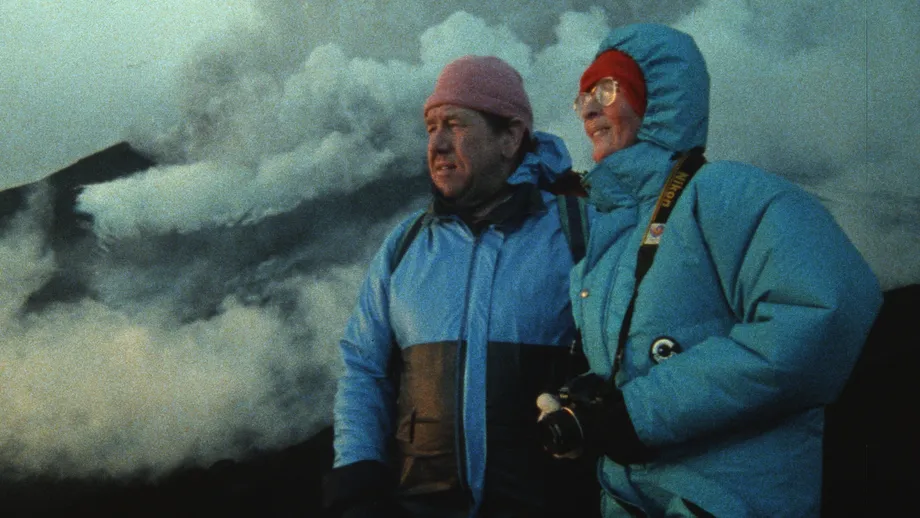
Pic. 5 Maurice and Katia Krafft in Fire of Love. National Geographic
“
WHEN I WAS A KID I WAS TERRIFIED OF VOLCANOES
”
There’s so much of Katia and Maurice’s life. One thing especially: Katia isn’t represented in the visual or audio record as much as Maurice. That’s partially due to the fact that she did not like to be on camera as much as Maurice, but also due to the sexism of the time, and the fact that people always looked to Maurice as the expert in some explicit and implicit ways.
That’s something that we toyed with exploring. We ultimately thought, based on what we knew about Katia, that she would not necessarily want it in the film and that led us to not include it. But that’s something that I hope will really come out in the conversations about what’s left out of the archive — not just because of what’s been lost in time or what didn’t get recorded, but also the matrix of politics that surrounds archival material where cameras are looking and gazing and capturing.
Other than volcanoes, did the movie teach you anything?
Existential questions, about things like time. I learned about the hegemonic regime of time that we live under now. Standard time came from coordinating railways and merchant ships that were literally meant to make these violent colonial processes more efficient; the dominant understanding of time is guided by something so violent. That was very important, and baffling, and fascinating to learn about, especially when thinking about its relationship to geologic time, and time told by rhythms in nature, or the arrhythmia of nature. That’s something that was really interesting that I want to continue to explore in future projects.
Different scales of time, and politics of time, crystallized clearly for Katia and Maurice what was most meaningful to them. They knew how fleeting a human life is, and thus, they knew that they could die at any moment, so how would they spend their days? It was very clear to them that they would spend it on erupting craters.
I think during a time like the pandemic, which for me personally was met with tremendous loss and fear and uncertainty, I was met with these guides through the unknown. I really feel like they’re expert navigators through terra incognita, so to speak, and I will always hold them close. I think, “What would Katia do? What would Maurice do?” I don’t know if I’d necessarily do what they would do, but even asking the question, I feel, always surfaces some insight or wisdom about just how to live my own days.
End




